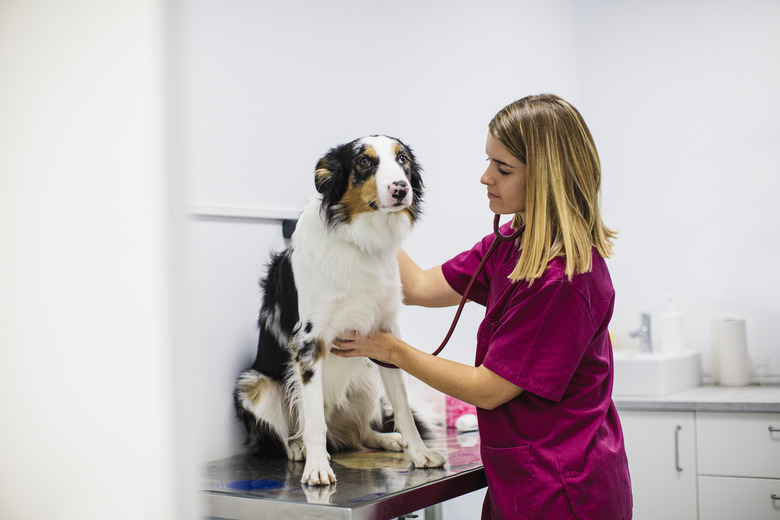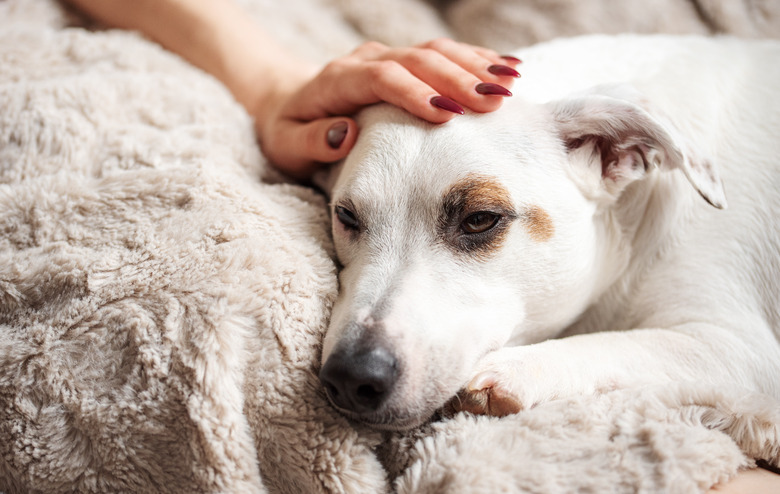Incision Bleeding In Dogs
It's the day after your dog was spayed, and their incision is leaking a bit of blood. While seeing your pet bleed can be disconcerting, it's normal for a dog to experience a bit of blood-laced fluid leaking from an incision for a day or two. But if the seepage lasts longer or the incision where the dog stitches are located is bleeding continuously, they should see the veterinarian. They may need an Elizabethan collar and crate rest to ensure proper incision care.
Is my dog healing from a spay or neuter?
Is my dog healing from a spay or neuter?
All wounds, including surgical incisions, go through four phases of healing:
- Hemostasis is the first stage, which can last up to two days. During this stage, blood flow is reduced, and clotting occurs to seal the wound.
- Inflammatory is the second stage, which can last up to seven days or more depending on the severity of the wound. White blood cells enter the wound to prevent infection, and you may see inflammation or redness around the incision.
- Proliferative is the third stage, which can last between four days and three weeks (or longer in severe cases). Wound healing progresses at this point, and new tissue starts to form, which can appear pink or red.
- Remodeling is the last phase and can last for several months or years. During this time, scar tissue forms and collagen builds up to make the new skin more elastic and strong.
Incision wound edges, such as a surgical opening, are held together with sutures, prompting new skin to form across the margin instead of along the length of the incision area. Since there's no gap to fill across the wound, it only takes approximately two weeks for an incision to reach the remodeling stage.
Signs of normal spay and neuter incision healing in dogs
Signs of normal spay and neuter incision healing in dogs
As your dog's surgical site heals, you might see the following in the first few days after surgery:
- Red and swollen incision edges
- Minor fluid leaking, perhaps tinged with blood
- Mild bruising
Unless there is significant swelling or fluid or your dog is acting lethargic or abnormal, these symptoms are not generally cause for alarm. Bruising may increase slightly the first day after surgery, but call your veterinarian if extensive or deep bruising continues to spread.
When dog incisions are leaking
When dog incisions are leaking
Though it's routine for an incision to ooze blood-tinted fluid, your dog bleeding after surgery intermittently for more than a day is not normal. The incision should not continuously drip or seep blood or other fluids at any point in the healing process. If there is more than a small amount of blood from the incision, they should see the veterinarian. Swelling, unpleasant odor, or very red skin are also signs that a visit to the veterinarian is in order.
Take your dog to the veterinarian if their incision experiences excessive redness, has a gap, is missing sutures, has an unpleasant odor or discharge, or if tissue is protruding. You should be able to touch the area around their incision without causing them pain. If your dog's wound opened after stitches are removed, the veterinarian should be notified.
Tips to help heal spay, neuter, and other incisions
Tips to help heal spay, neuter, and other incisions
You'll want to restrict your dog from excessive activity. Your dog's normal day-to-day activities can prompt incision bleeding, swelling, or other healing complications, especially if they're an active dog. If they lick or chew their incision or engage in strenuous physical activity, such as running or jumping, they can cause the sutures to pull apart, leading to bleeding. Licking the incision can slow healing or introduce infection to the incision site.
If they are licking or biting their wound, use an Elizabethan collar, or e-collar, to keep the incision inaccessible. Keeping them on-leash while outdoors will restrict their activity so they don't stress the healing site. Taking short walks using a short leash will help ensure the incision doesn't open. Also, bathing or getting the wound wet should be avoided until the dog stitches or sutures are removed and the wound is fully healed.
Unless instructed by your veterinarian, do not apply disinfectants, hydrogen peroxide, or alcohol to your dog's wound post-surgery. Also, avoid creams and ointments unless directed by your veterinarian.
The bottom line
The bottom line
It's normal for your dog to experience swelling, redness, or light bleeding around an incision following spaying, neutering, or another surgical procedure. To ensure healing following your dog's surgery, restrict your dog's activity, look for signs of infection, and notify your veterinarian immediately if the bleeding is heavy or if light bleeding or oozing continues for more than one day.

